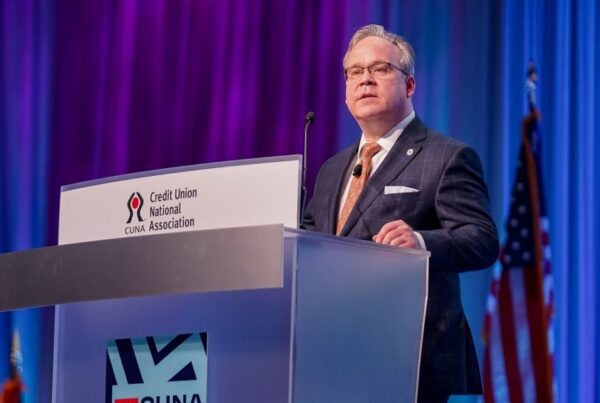Following the devastating effects of the financial crisis a decade ago, mainstream banks administered a mass contraction. Banks closed some 6,000 branches and created 86 new “banking deserts” in the process, while credit union locations grew by a factor of almost 400.
Whether it’s due to a financial crisis, advances in fintech and digital banking, or the necessity of remote access because of the pandemic, there are reasons why those numbers lean the way they do. Credit unions operate with their members in mind, offering a philosophy of financial inclusion to the people and communities they serve. They were designed by Congress during the Great Depression with the express purpose to “promote thrift among members and create a source of credit for productive and provident purposes.”
What we now call “financial inclusion” is deeply rooted in the genetic makeup of the member-owned credit union movement while providing the necessary sources of finance and guidance on behalf of members. Today, financial inclusion is more alive and accessible than ever to credit unions’ everyday financial offerings, with the incorporation of fintech like QCash Financial’s digital small dollar loan platform.
Empowering the Underserved Through Credit Unions

For almost 90 years credit unions have extended a hand to their communities, as well as expanded access to responsible financial products and services for low-income communities and the underserved. Financial inclusion remains, to this day, one of the most effective structures to empower lower-income consumers with asset-building tools to achieve better financial stability and overall well-being.
Credit unions operate on the principle that access to responsible financial products should be a fundamental right. QCash Financial believes credit unions to be the best financial resource for localized economic resurgence as they connect members and consumers with sustainable, scalable, and affordable financial products and services. Credit unions are held in check by the members they serve and held accountable to the communities in which they reside, while remaining mission-driven.
This is in opposition to banks, who dropped 6,764 branches in the United States after the financial crisis from 2013 to 2017, according to a report by the Federal Reserve. The central bank identified 44 “deeply affected” counties that held 10 or fewer branches in 2012 and lost half or more of them by 2017. Thirty-nine of those counties were rural. These “banking deserts,” where no banks can be found within 10 miles of populated areas, are becoming more common. According to the National Community Reinvestment Coalition (NCRC), 86 new banking deserts sprung up from 2008 to 2016.
As a bank exits, often due to loss of profit margin, in some cases it coordinates with another institution, typically a credit union, to fill the void. Thanks to their member-owned, not-for-profit model, credit unions are allowed to function in areas that would otherwise be labeled as banking deserts.
This is good for low-income, underserved, and minority populations who have been marginalized by the financial mainstream. The lack of access to asset-building programs and services has significantly limited such underserved communities, reflected in low homeownership rates and negatively affecting higher education attendance and graduation rates. In addition, Latinx, Black, and Native American populations have the highest unbanked and underbanked demographic rates in the U.S. and are disproportionately targeted by predatory payday lenders.
Credit unions can and should be the solution to today’s financial challenges. Member reports and research consistently illustrate that financial inclusion and community development not only reflect sustainable financial health results but perpetuate economic growth. In fact, credit unions that focus on financial inclusion tend to be more profitable, exhibit more robust lending activity, and grow faster than their mainstream financial institution counterparts. Such results prove that mission and margin can and should go hand-in-hand.
QCash Financial continues to support credit unions in their mission to provide their communities with a responsible, digital small dollar loan program.






